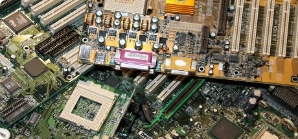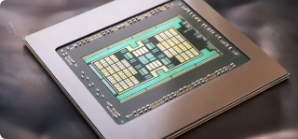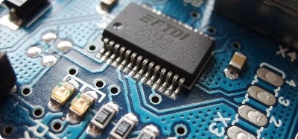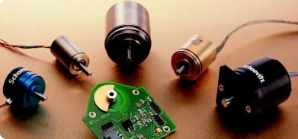Innovations in E-Waste Management for Sustainable Electronics
1/15/2025 3:02:59 PM
Circular Economy Revolution: Innovations in E-Waste Management for Sustainable Electronics
The global electronics industry stands at a pivotal juncture, navigating the twin challenges of rapid technological progress and escalating environmental pressures. With an estimated 53.6 million metric tons of e-waste generated worldwide in 2023 alone, the urgency for sustainable solutions has never been more pronounced. This article delves into groundbreaking advancements in electronic waste management, exploring how technological breakthroughs and systemic reforms are redefining the industry's approach to resource circularity.
The E-Waste Crisis: A Growing Challenge
E-waste is the world's fastest-growing waste stream, projected to surpass 74 million metric tons by 2030. Comprising discarded smartphones, laptops, and industrial equipment, this waste contains critical resources like gold, silver, and rare earth metals-essential for manufacturing new electronics. Yet, only 17.4% of e-waste is recycled properly, leaving vast quantities of valuable materials trapped in landfills or processed through unsafe informal channels, particularly in developing regions.
1. AI-Powered Sorting Systems
Artificial intelligence is revolutionizing e-waste processing by automating sorting workflows. Advanced systems using computer vision and machine learning can identify over 2,000 material types with 99.7% accuracy, outperforming human capabilities. For example, AI robots analyze spectral data to distinguish between similar components like copper and aluminum, ensuring precise separation and maximizing resource recovery.
2. Biodegradable Electronics Materials
Material science innovations are enabling recyclable devices. Researchers at Duke University developed a printable dielectric ink from nanocellulose, a plant-based biodegradable material. Compatible with carbon nanotube conductors, this ink creates thin-film transistors that dissolve in water, separating reusable parts from biodegradable residues. This paves the way for "circular electronics," designed for easy disassembly and material reuse.
3. Water-Soluble Composites
A breakthrough from Tianjin University introduces water-soluble nanocomposites for pollution-free recycling. These materials, used in conductive components, remain stable during use but dissolve completely in water at disposal, allowing effortless extraction of intact microchips and reducing recycling costs. Their biocompatibility also opens doors for medical applications like dissolvable implants.
Policy and Collaboration: Driving Change
1. Extended Producer Responsibility (EPR)
Policies like Japan's Home Appliance Recycling Law hold manufacturers accountable for product lifecycles, mandating recycling rates and financial contributions. Companies such as Lenovo are adopting EPR, aiming to reuse 76% of recycled computer parts by 2026, incentivizing recyclable design.
2. Closed-Loop Supply Chains
Innovative industries are creating closed-loop systems where e-waste is repurposed into new products. Rare earth metals from discarded devices, for instance, can be reintegrated into renewable energy technologies, linking sustainability with innovation.
3. Global Partnerships
Initiatives like the Basel Convention aim to curb illegal e-waste trade, though enforcement challenges persist. Strengthened collaboration between governments, NGOs, and corporations is vital to standardize data and drive effective policies, as seen in the Global E-Waste Statistics Partnership.
The Path Forward: Innovation and Accountability
While technology offers promise, scaling solutions requires overcoming economic and logistical hurdles. High costs for AI systems and recycling infrastructure remain barriers, alongside the need for public awareness to promote responsible disposal and refurbished product acceptance.
The shift to a circular electronics economy is both an environmental necessity and an economic opportunity, with recoverable materials valued at $70 billion by 2030. Success demands a holistic approach blending technology, policy, and education to transform e-waste from a crisis into a foundation for a sustainable future.
The global electronics industry stands at a pivotal juncture, navigating the twin challenges of rapid technological progress and escalating environmental pressures. With an estimated 53.6 million metric tons of e-waste generated worldwide in 2023 alone, the urgency for sustainable solutions has never been more pronounced. This article delves into groundbreaking advancements in electronic waste management, exploring how technological breakthroughs and systemic reforms are redefining the industry's approach to resource circularity.
The E-Waste Crisis: A Growing Challenge
E-waste is the world's fastest-growing waste stream, projected to surpass 74 million metric tons by 2030. Comprising discarded smartphones, laptops, and industrial equipment, this waste contains critical resources like gold, silver, and rare earth metals-essential for manufacturing new electronics. Yet, only 17.4% of e-waste is recycled properly, leaving vast quantities of valuable materials trapped in landfills or processed through unsafe informal channels, particularly in developing regions.
The environmental and health impacts are severe. Toxic substances such as lead, mercury, and flame retardants leach into ecosystems, contaminating soil and water. Illegal cross-border e-waste shipments from developed to under-resourced nations worsen these issues, underscoring the need for global, equitable solutions.

1. AI-Powered Sorting Systems
Artificial intelligence is revolutionizing e-waste processing by automating sorting workflows. Advanced systems using computer vision and machine learning can identify over 2,000 material types with 99.7% accuracy, outperforming human capabilities. For example, AI robots analyze spectral data to distinguish between similar components like copper and aluminum, ensuring precise separation and maximizing resource recovery.
2. Biodegradable Electronics Materials
Material science innovations are enabling recyclable devices. Researchers at Duke University developed a printable dielectric ink from nanocellulose, a plant-based biodegradable material. Compatible with carbon nanotube conductors, this ink creates thin-film transistors that dissolve in water, separating reusable parts from biodegradable residues. This paves the way for "circular electronics," designed for easy disassembly and material reuse.
3. Water-Soluble Composites
A breakthrough from Tianjin University introduces water-soluble nanocomposites for pollution-free recycling. These materials, used in conductive components, remain stable during use but dissolve completely in water at disposal, allowing effortless extraction of intact microchips and reducing recycling costs. Their biocompatibility also opens doors for medical applications like dissolvable implants.
Policy and Collaboration: Driving Change
1. Extended Producer Responsibility (EPR)
Policies like Japan's Home Appliance Recycling Law hold manufacturers accountable for product lifecycles, mandating recycling rates and financial contributions. Companies such as Lenovo are adopting EPR, aiming to reuse 76% of recycled computer parts by 2026, incentivizing recyclable design.
2. Closed-Loop Supply Chains
Innovative industries are creating closed-loop systems where e-waste is repurposed into new products. Rare earth metals from discarded devices, for instance, can be reintegrated into renewable energy technologies, linking sustainability with innovation.
3. Global Partnerships
Initiatives like the Basel Convention aim to curb illegal e-waste trade, though enforcement challenges persist. Strengthened collaboration between governments, NGOs, and corporations is vital to standardize data and drive effective policies, as seen in the Global E-Waste Statistics Partnership.
The Path Forward: Innovation and Accountability
While technology offers promise, scaling solutions requires overcoming economic and logistical hurdles. High costs for AI systems and recycling infrastructure remain barriers, alongside the need for public awareness to promote responsible disposal and refurbished product acceptance.
The shift to a circular electronics economy is both an environmental necessity and an economic opportunity, with recoverable materials valued at $70 billion by 2030. Success demands a holistic approach blending technology, policy, and education to transform e-waste from a crisis into a foundation for a sustainable future.



